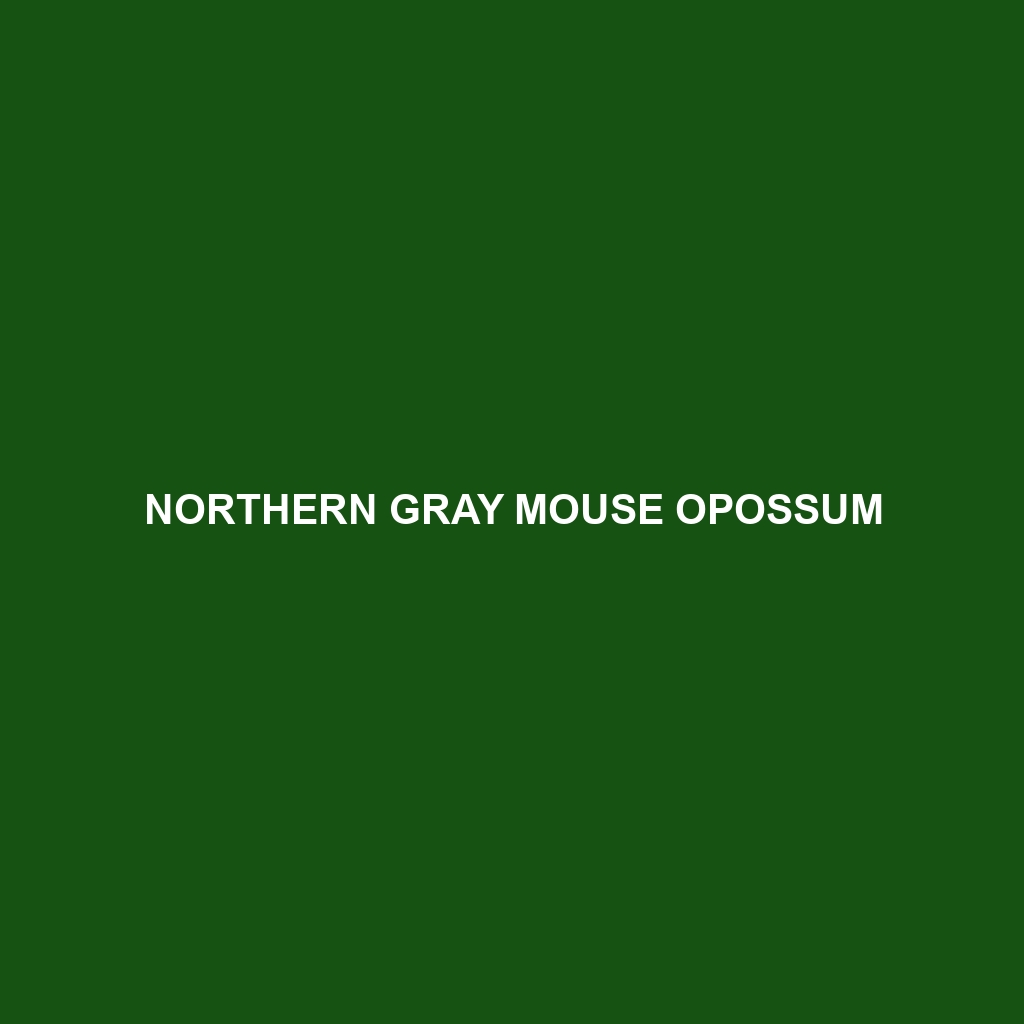Northern Gray Mouse Opossum: A Detailed Profile
:
The Northern Gray Mouse Opossum (Tlacuatzin canescens) is a small, nocturnal marsupial native to Central America and parts of northern South America. This elusive creature, which belongs to the family Didelphidae, is known for its agility, adaptability, and secretive nature. Despite its diminutive size, the Northern Gray Mouse Opossum plays a significant role in its ecosystem as both a predator of insects and a disperser of seeds.
Physical Characteristics:
Size: Adult Northern Gray Mouse Opossums typically measure between 8 to 14 centimeters (3.1 to 5.5 inches) in body length, with a tail that adds an additional 10 to 15 centimeters (3.9 to 5.9 inches). They generally weigh between 15 to 30 grams (0.5 to 1 ounce).
Coloration: Their fur is predominantly gray, with a slight brownish hue on the dorsal side and a softer, lighter gray on the ventral side. The ears are rounded and mostly hairless, giving them a distinct appearance.
Special Features: This species has large, dark eyes adapted for nocturnal vision, and a long, prehensile tail that aids in climbing and maintaining balance. Their sharp claws are well-suited for gripping tree bark and branches.
Behaviors:
Social Interactions: The Northern Gray Mouse Opossum is generally a solitary animal, coming together only briefly during mating seasons. They communicate primarily through vocalizations and scent markings.
Feeding Habits: Omnivorous by nature, their diet consists of insects, small fruits, nectar, and occasionally small vertebrates. Their preference for a varied diet makes them effective foragers.
Ecological Roles: As insectivores, they help control insect populations. Their feeding habits also contribute to seed dispersal, aiding in plant reproduction and forest regeneration.
Habitats:
Natural Habitat: This species thrives in a variety of habitats, including tropical rainforests, dry forests, and scrublands. They are typically found from sea level up to 2,000 meters (6,561 feet) in elevation.
Adaptations: Their arboreal lifestyle is supported by their prehensile tail and sharp claws, which allow them to navigate through the trees efficiently. Their nocturnal habits help them avoid many predators and competition for food.
Conservation Status:
IUCN Status: The Northern Gray Mouse Opossum is currently listed as Least Concern by the International Union for Conservation of Nature (IUCN), due to its wide distribution and presumed large population.
Threats: Despite their stable status, they face threats from habitat destruction due to deforestation and agricultural expansion. Conservation efforts are focused on preserving their natural habitats.
Fun Facts:
Reproductive Strategy: Unlike many marsupials, the Northern Gray Mouse Opossum does not have a pouch. Instead, the young cling to the mother’s teats until they are developed enough to ride on her back.
Evasive Maneuvers: When threatened, they can feign death (a behavior known as thanatosis) to evade predators, although this is less common than in other opossum species.
Adaptability: They are highly adaptable and can survive in secondary forests and disturbed habitats, showcasing their resilience in the face of environmental changes.
By understanding the Northern Gray Mouse Opossum’s physical characteristics, behaviors, and ecological roles, we can better appreciate this remarkable species and the importance of conserving its habitat for future generations.
